Service Design: the next step in evolution after UX Design
It used to be simple: if you needed a product, you went to the store and got one. Now, our economy consists of services, from ‘Software as a Service’ to Uber and Netflix, to a subscription to razor blades. With the shift of products to services, comes another shift: from User Experience Design to Service Design. But isn’t SD a lot like UXD? Both have a customer-centric approach. What are the differences?
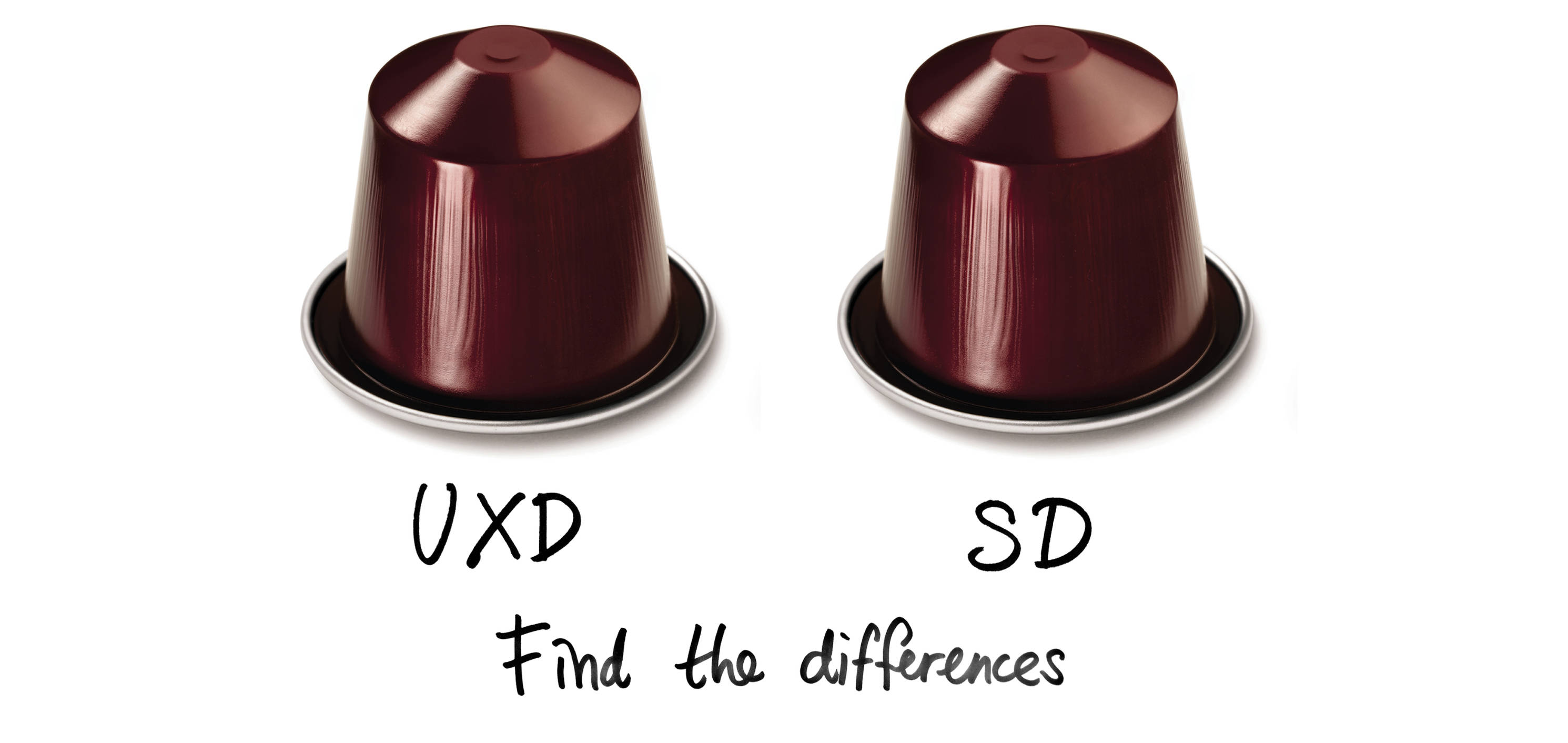
From a cup of coffee to coffee-as-a-service
In a way, SD is the next step in the ‘evolution’ of designing experiences. Let’s illustrate this with coffee. If UXD is about the experience of the product itself (making and drinking coffee), SD is about the entire service that exists around providing you with your cup of java when you need it. Depending on how the user wants to drink his coffee, different user experiences can be designed. One particular, at the time novel, way of making yourself a cup of coffee is the Nespresso coffee system. Nespresso is aimed at people who don’t want the hassle of making an espresso the old fashioned way (grinding beans, have an expensive espresso machine, putting just the right amount of coffee in the piston, know how to operate it), but do want to enjoy good quality espresso, quickly and easily. Nespresso created an entire new user experience, involving a simple to use special machine and capsules.
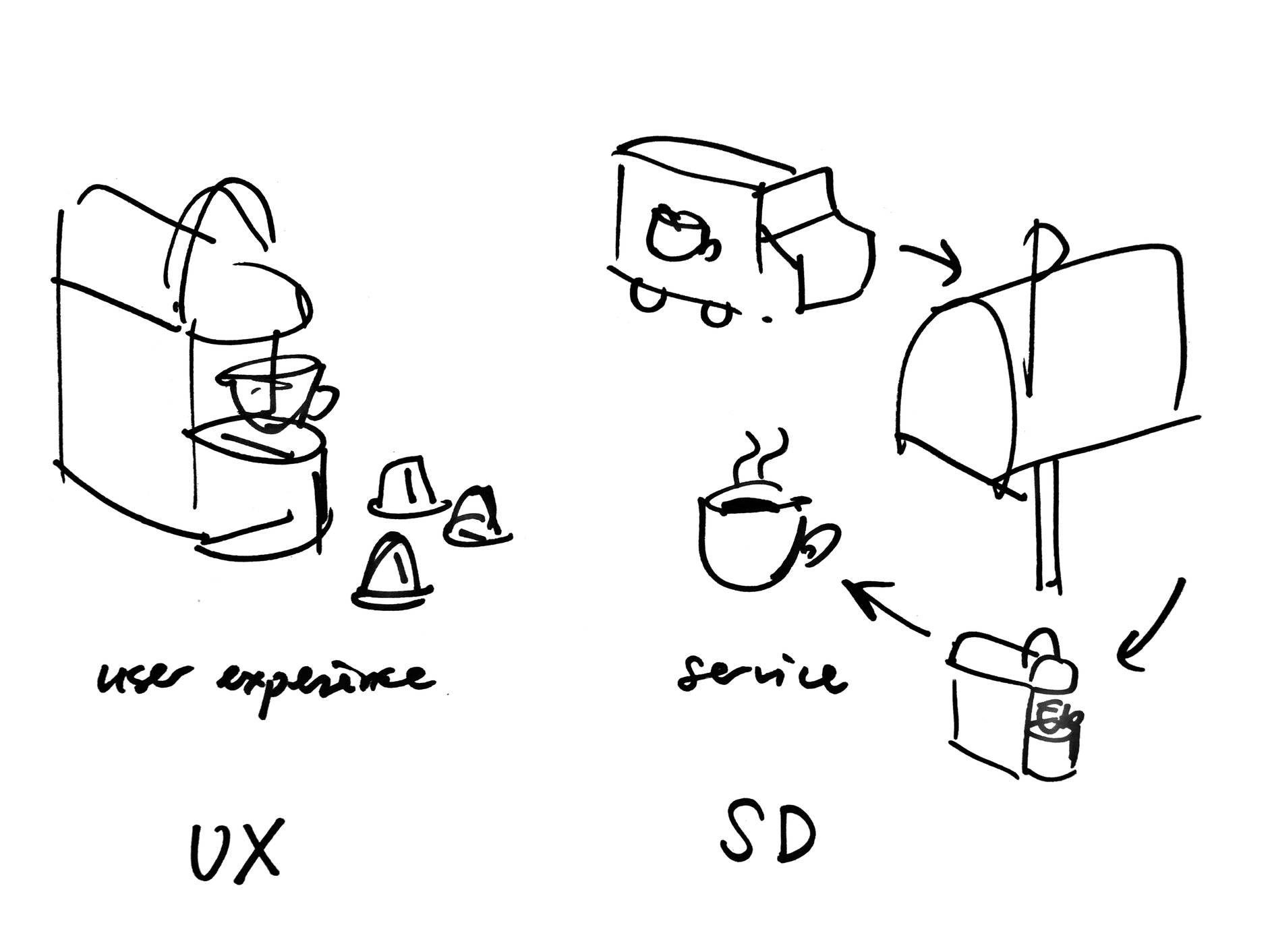
But now, Nespresso is no longer the exclusive manufacturer of the Nespresso-capsules. Today, many brands sell capsules that are suitable for Nespresso-machines, some much cheaper or even tastier than Nespresso’s own. So the Nespresso ‘capsule experience’ is not differentiating enough anymore. Enter: “coffee as a service”. To make it more appealing to drink their coffee, Nespresso now also offers a subscription-service to their coffee: for a fixed montly price, you always have a supply of great tasting coffee. Even the Nespresso machine is part of the subscription, you don’t have to buy one. In fact there exist many coffee services today, also for the ‘baristas’ who do like to grind their own beans, such as Blue Bottle Coffee
https://bluebottlecoffee.com/at-home
. And it’s not just coffee. There is Dollar Shave Club for razors, Bloomon for fresh flowers and Hello Fresh for meal kits. You can even have a single subscription for all your regular groceries like peanutbutter and toiletpaper (and coffee), with the ‘auto-replenishment service’ Stockon (which we designed).
''When your product's user experience is no longer differentiating enough, a service can be.''
Even though the end result can be the same (e.g. a cup of coffee), the service can be what makes your experience unique. Note that Service Design is not a substitute of UX Design. In fact, a service consists of many different user experiences - each with their own user interfaces. As we will see, UXD is the direct follow-up of SD.
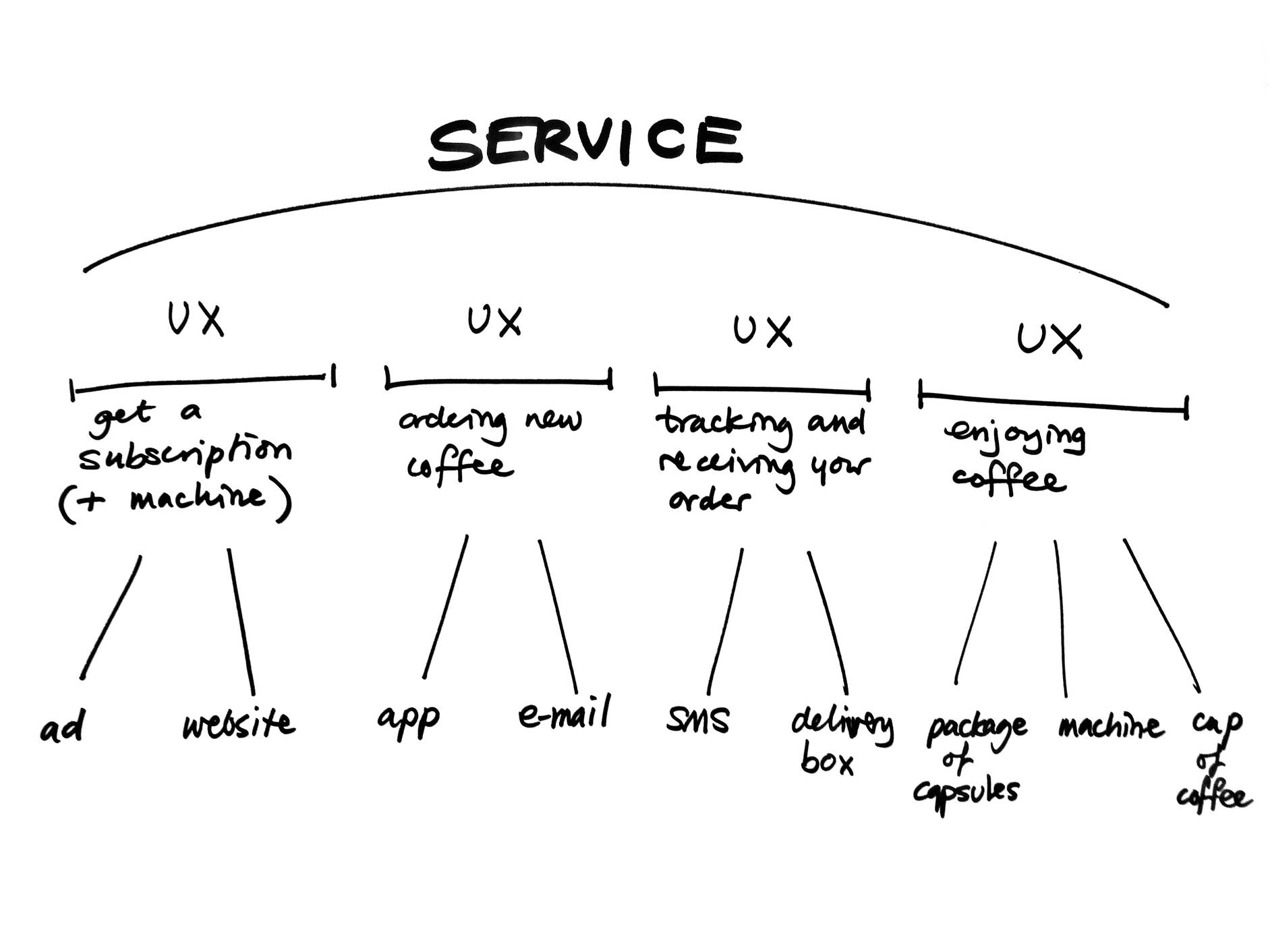
Subscriptions are not the only kind of services. There are many other forms. A multimedia tour is a service provided by a museum to its visitors. Being able to request repairs, is a service that a housing corporation offers its tenants. If you think about it, many experiences are in fact part of a service.
Service Design has just three parts
So how do you design a service? At Fabrique, we have been designing services for many years now, for companies such as IKEA, ABN Amro and even the National Gallery in London. Every project was different, but in the end we have learned that Service Design consists of the same three parts:
1. Research: knowing the user’s context and the internal actors and stakeholders
2. Orchestration: aligning all the different touchpoints, actors and processes
3. Organization: changing the organization to make the service possible
Let’s take a look at how UXD and SD are different by going into these three parts.
1. From user research to researching all actors and stakeholders
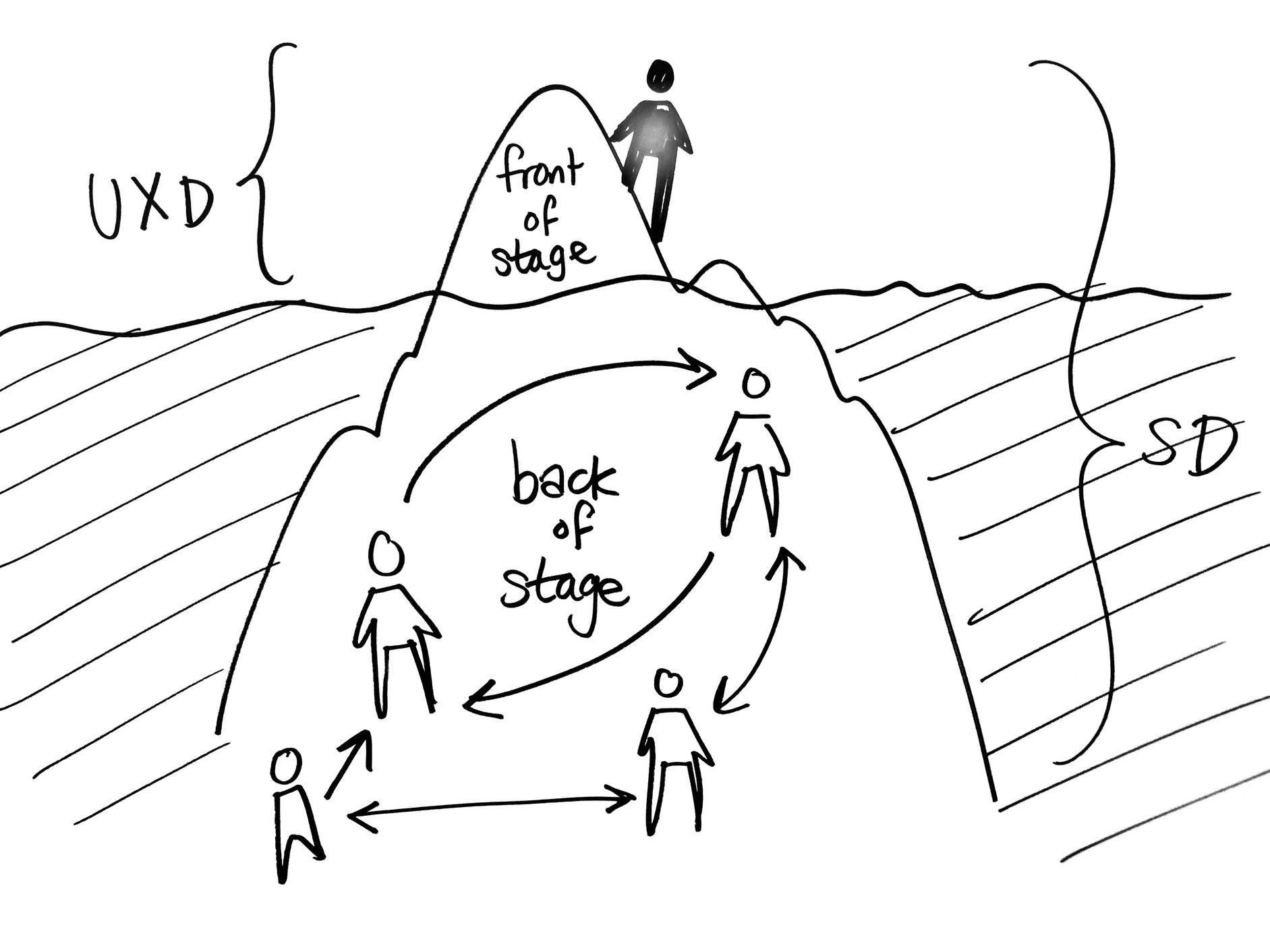
I don’t have to tell you that research with end users is an important, essential part of UXD. This is no different with SD. In fact, good qualitative research is even more important with SD than with UXD, because the entire experience of your customer is scattered across different places and moments. A great way to document your research are Customer Experience Maps. However, only doing research with users is not enough. Often with services, most complexity lies within the organization. Or in other words: the ‘back of stage’, in addition to the ‘front of stage’. To uncover that complexity, you have to talk to the people, or actors, that are involved in the service. From repairmen to customer service and to the person that makes the template of the paper letters the customer receives. Service Blueprints are a great method for drawing out how these actors relate to the service.
2. From creating touchpoints to orchestrating them
Whereas UXD tends to focus on a specific touchpoint (e.g. an app or website), SD is about the orchestration of all the different touchpoints, whether they are digital or physical. But not just the touchpoints, also places, processes and people behind the touchpoints. If we put that in one sentence, you get the definition of Service Design we use at Fabrique:
''Service design is the orchestration of touchpoints, places, processes and people that together support the total customer experience.''
This means SD is not a substitute for UXD. Rather, UXD is the immediate follow-up of SD. SD provides the briefing, conditions and context for good UXD. But you still need UXD! At the same time, SD is not the start of things. Having a solid brand/corporate strategy comes first. You could have an idea for a great service, but if it does not fit the strategy of the company, it doesn’t make much sense to design it.
Let’s give some examples. We worked for a housing corporation in Amsterdam called De Key. Their corporate strategy was to empower their tenants to be more self-reliant. At the time they were reliant on De Key’s customer service phone-line to report damages to their houses and request repair. This was cumbersome for the tenants and a lot of work for the customer service reps. So De Key decided to offer “an online repair-request experience that is as good or even better than through the phone”. Eventually, we designed and built an intuitive web-interface through which tenants could request and plan a repair in a few clicks. Even though the website was the main touchpoint, the total service includes of course the repair itself and updates through SMS text messages, like the repairman’s name and what time he will arrive. The trick is to orchestrate these different touchpoints and actors to provide one seamless experience.
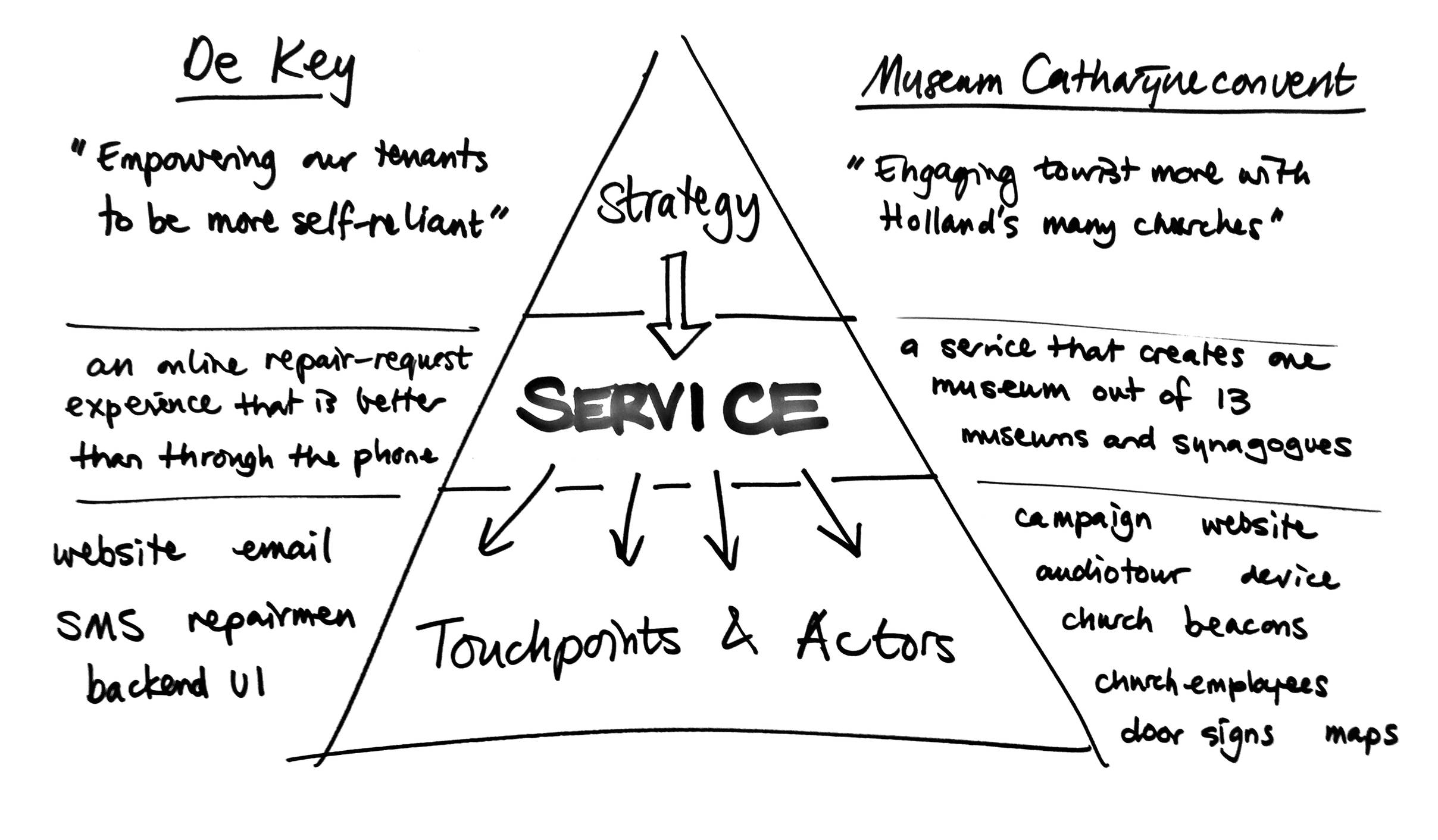
Another case. After we designed their own website, Museum Catharaijneconvent came to us with an interesting problem: why do Dutch people walk past church doors in their own country,
while they have a look inside every little church when they are on holiday abroad? Together, we designed ‘The Largest Museum of Netherlands’, a service that creates one museum out of thirteen special churches and synagogues. The main experience is a location-based audio tour through each church, but the total service consists of many things: a national campaign, a website, informational maps, banners and even door signs at the churches.
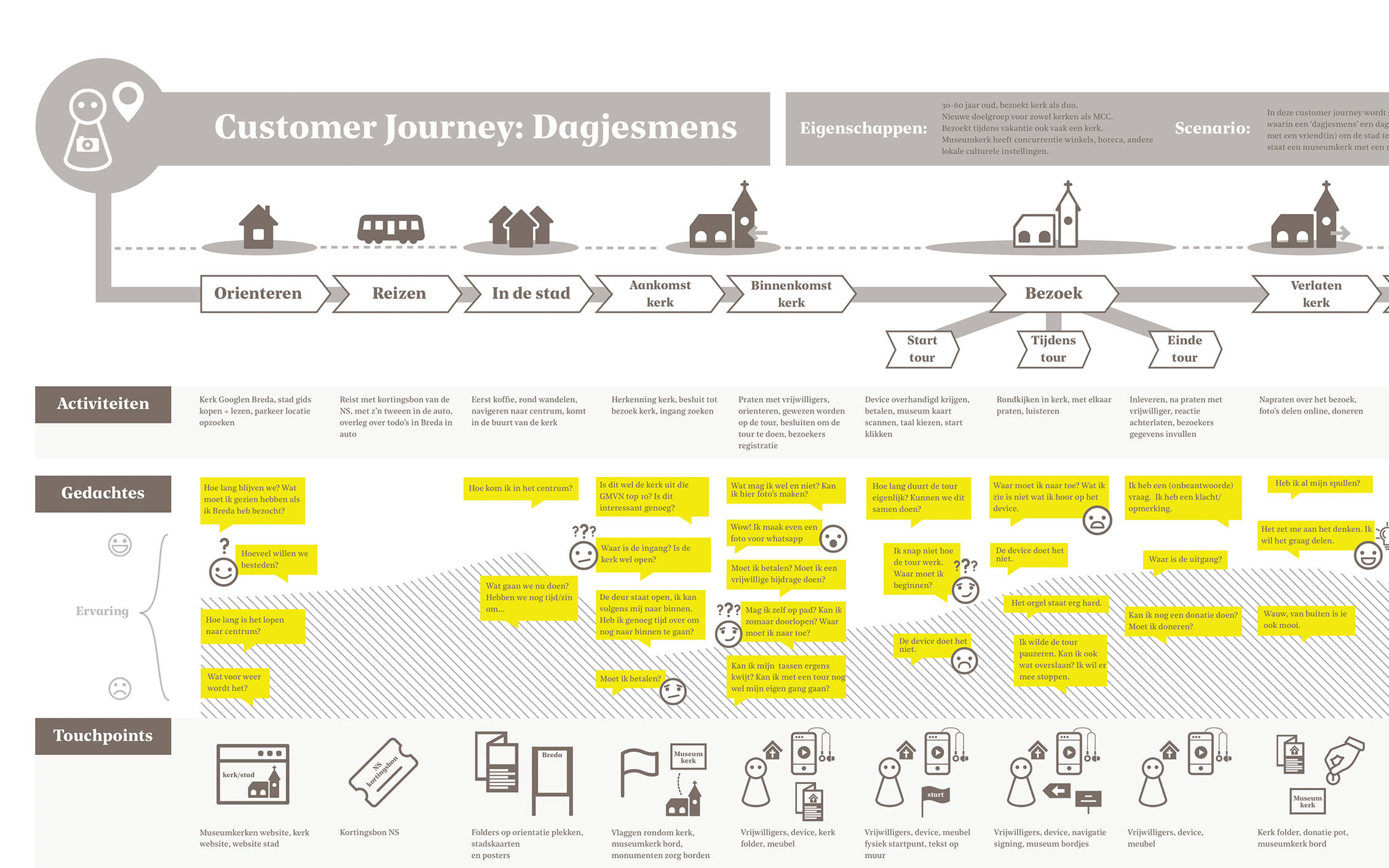
Again, Customer Experience Maps and Service Blueprints (this time for the desired state) are good methods to align all the different experiences, touchpoints and actors to ensure a consistent, coherent experience.
3. From creating deliverables to changing an organization
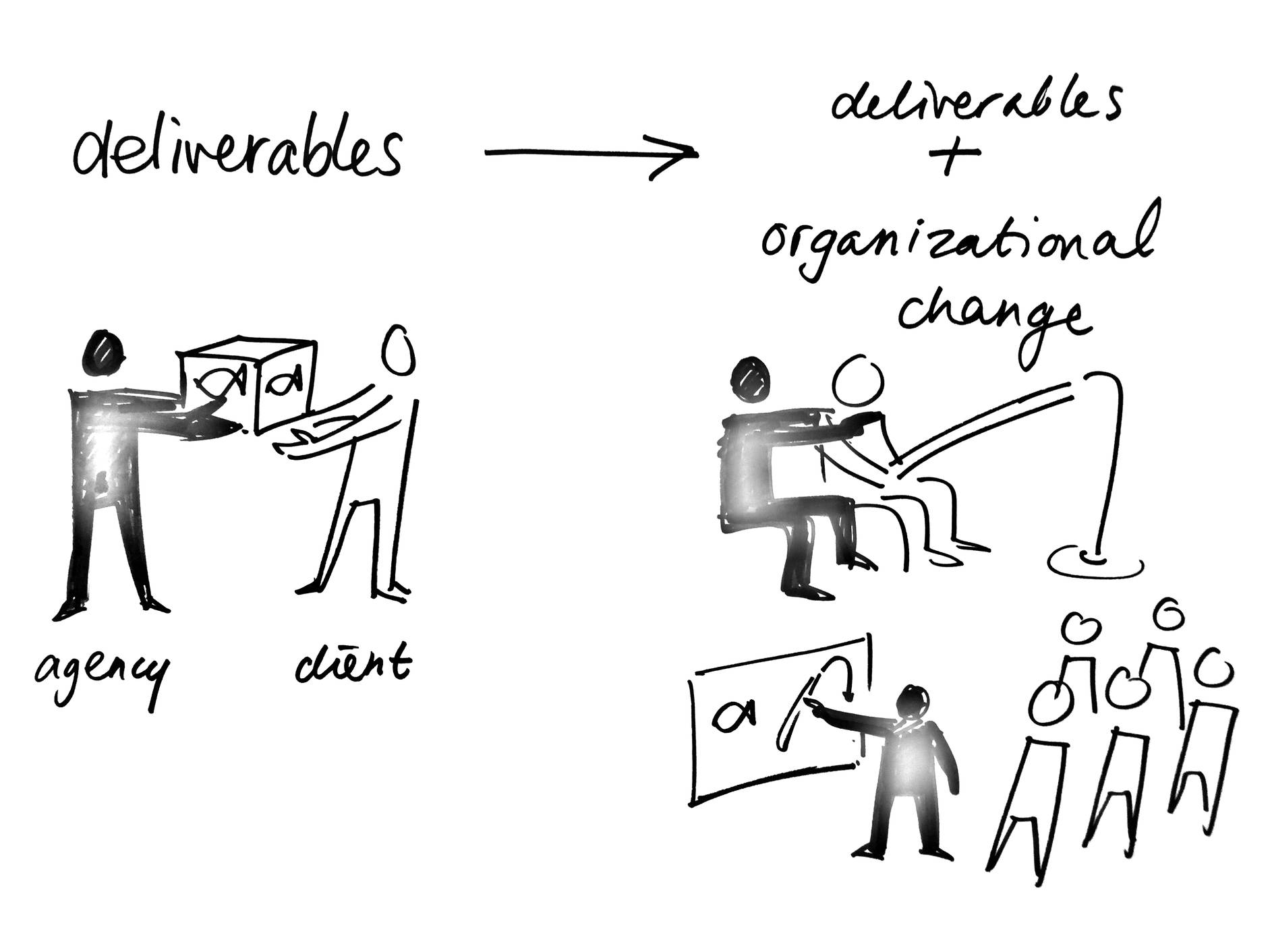
The third difference between SD and UXD, is that UXD tends to be done when certain deliverables have been realized. A UXD project is finished when the website is live, when the app is in the app store or when the new vending machine is installed at the train station - and when the performance of all these things is being monitored and optimized, of course. But Service Design goes beyond realizing user-facing designs, because it recognizes that a lot has to happen in the organization to make the service a success or even possible at all. That’s why we put a lot of effort, besides creating deliverables, into helping the organization change to a more customer-centric company, step by step. So what do we do?
- Evangelism Because different parts of the same organization need to work together to make a service work, it helps if we ‘preach’ customer-centered design throughout different layers of the organization. This can be a matter of informal talks with stakeholders, but also prepared presentations to groups of people.
- Capability building Next to working on the ‘Why’, we also work on the ‘How’. We help our clients to become better service providers, by giving them workshops and trainings. Whether we are teaching legal consultant to work with new customer management software, or training managers to work more Agile, for example with our own Scrum Academy. We believe in not only providing the fish, but also teaching how to use a fishing rod.
- Tools and documentation At the end of the day, the people involved in a service need specific tools and knowledge to do their work. They need better or even completely new software to do tasks, but also clear rules and guidelines. That’s why we also design and build the interfaces that the backstage actors work with and set up clear documentation about new processes.
- Organizing and hiring people Finally, in many cases, the way people are organized in a company needs to change as well, in order to provide the best service to their customers. We advise our clients how to organize teams and even help them recruit new people.
Next time: our Secret Sauce to Service Design
As you have seen, there are many parallels but also clear differences between Service Design and UX Design. But just knowing what SD is and its approach doesn't guarantee a great service.
So that's why I want to let you in on our secrets to doing SD successfully. If you want to know more read my next blogpost: Our secret sauce to Service design. Or check out our Service Design cases. Or start designing a great service, of course. Myself, I'm getting a cup of coffee.
Patrick Sanwikarja is UX Director at Fabrique.